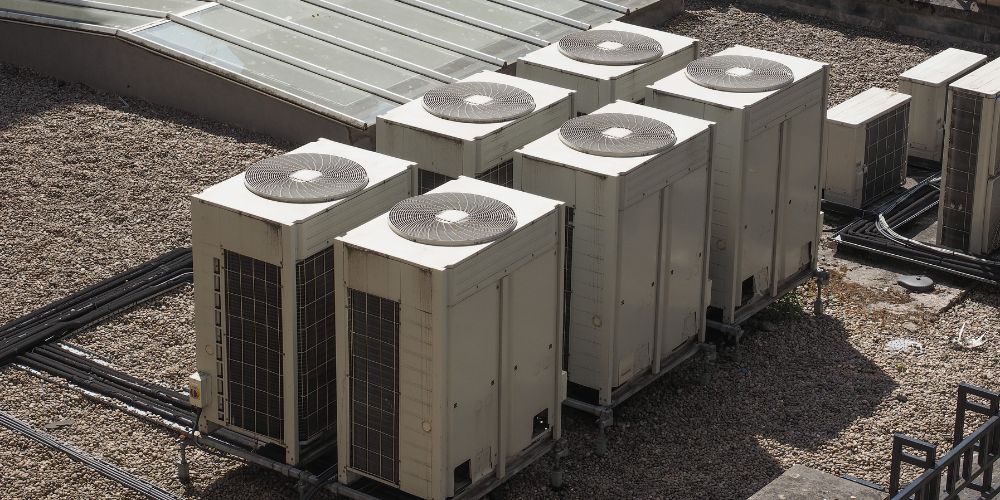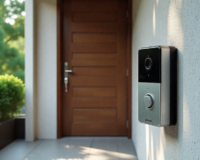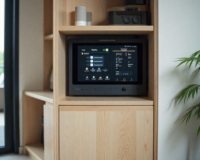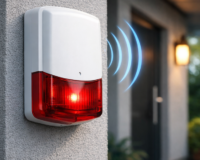As you may know, Victoria is making significant efforts to reduce its reliance on natural gas. Starting January 1, 2024, new legislation from the State Government will prohibit gas connections for new constructions. Additionally, many homeowners with existing gas connections are opting to transition to electric heating and cooling alternatives.
If you’re considering making this switch, several initiatives are available to assist households in moving away from gas and embracing electric solutions. Electric appliances and reverse-cycle electric heating systems can easily be powered by renewable energy sources, and programs like the Victorian Energy Upgrades (VEU) offer financial incentives to support this transition.
In this article, we will cover everything you need to know about gas and electric heating and cooling systems, the process of switching, associated costs, and whether it is a worthwhile investment.
Read more: Gas vs Electric Heating: Which is the Best Choice?
Benefits of Converting to Electric Heating
Improved Indoor Air Quality
Electric heating and cooling systems do not involve combustion, thus eliminating the release of by-products such as carbon monoxide and other pollutants, resulting in healthier indoor air quality.
Flexible Installation
Electric furnaces and other electric heating systems do not require a gas line, simplifying the installation process. This flexibility makes it easier to adapt or upgrade your system without significant infrastructure changes.
Adaptable to Renewable Energy
Electric heating and cooling can be powered by renewable energy sources like solar power, making it a sustainable and eco-friendly option. High-efficiency gas furnaces are becoming obsolete as more homeowners opt for electric systems that can be powered by clean energy.
Cost Savings
Electric heating and cooling systems can lead to reduced energy costs and lower maintenance requirements. Additionally, government incentives, such as those provided by the VEU Program, can further reduce the financial burden, making electric heating and cooling an economically viable option in the long run.
Less Maintenance
Electric furnaces have fewer components prone to wear and tear compared to gas heaters. This results in lower maintenance requirements and costs, ensuring reliable performance with less frequent servicing.
Latest Technology
Modern electric heating systems often integrate seamlessly with smart home technology. Features such as programmable thermostats, remote control, and compatibility with home automation systems make it easier to manage and optimize heating.
Understanding Home Heating Systems
Gas-Based Heating
Gas heating relies on a connection to the natural gas network or LPG, requiring adequate ventilation and proper flueing for safe operation. Gas-ducted heaters distribute heat through floor or ceiling vents, offering powerful, consistent heating for the entire home or zoned areas. However, gas prices have been rising, and gas heating systems pose safety risks such as carbon monoxide leaks and increased indoor moisture.
Electric Heating
Electric heating systems convert electrical energy into heat energy. Common types include split systems, multi-split systems, and ducted reverse cycle air conditioning. These systems offer both heating and cooling capabilities, providing efficient temperature regulation for individual rooms or the entire home. Electric heating systems are generally safer, more energy-efficient, and environmentally friendly compared to gas heaters.
Read more: Comparing Gas Ducted vs Reverse Cycle Heating
Types of Electric Heating and Cooling Systems
Before diving into the replacement process, it’s essential to understand the different types of electric heating and cooling systems available:
- Heat Pumps: These systems can both heat and cool your home. They work by transferring heat between the inside and outside of your house.
- Air-source Heat Pumps: Extract heat from the air outside.
- Ground-source (Geothermal) Heat Pumps: Extract heat from the ground.
- Electric Furnaces: Use electric resistance heating to warm the air, which is then distributed throughout the home via ducts.
- Ductless Mini-Split Systems: Provide targeted heating and cooling to specific rooms without the need for ductwork.
- Radiant Floor Heating: Electric coils or water-heated tubing installed under the floor surface.
Planning Your Replacement
Assess Your Current System
Before making any decisions, you need to assess your current heating system and your home’s requirements:
- Heating and Cooling Load: Determine the heating and cooling load for your home. This involves calculating the amount of energy needed to maintain a comfortable temperature.
- Ductwork: Evaluate the condition and compatibility of your existing ductwork. If your current system uses ductwork, you need to check for leaks or inefficiencies.
- Electrical Capacity: Ensure your home’s electrical system can handle the increased load of an electric heating and cooling system. You may need to upgrade your electrical panel.
Choosing the Right System
Selecting the right electric heating and cooling system depends on several factors, including your climate, home size, budget, and personal preferences:
- Climate Considerations: Heat pumps are highly efficient in moderate climates but may require a supplemental heating source in extremely cold regions.
- Home Size and Layout: Larger homes may benefit from central systems like heat pumps or electric furnaces, while smaller homes or specific zones might be better served by ductless mini-splits.
- Budget: Initial costs, operating costs, and potential savings should all be considered. Heat pumps typically have higher upfront costs but offer long-term savings due to their efficiency.
- Environmental Goals: If reducing your carbon footprint is a priority, consider systems that can be powered by renewable energy sources.
Making the Switch: A Step-by-Step Guide

1. Assess Your Current System
Evaluate your existing heating system and your home’s requirements. Determine the heating and cooling load, inspect the condition and compatibility of your ductwork, and ensure your electrical system can handle the increased load of an electric heating and cooling system. Upgrading your electrical panel may be necessary.
2. Choosing the Right System
Select the appropriate electric heating and cooling system based on factors such as climate, home size, budget, and personal preferences. Consider options like air-source heat pumps, ground-source heat pumps, electric furnaces, and ductless mini-split systems.
3. Planning and Permits
Thoroughly plan the replacement process and obtain any necessary permits. Check local building codes and regulations regarding HVAC installations.
4. Hiring a Professional
Hire a certified HVAC professional to ensure proper installation. A professional can maximize the system’s efficiency and safety.
5. Removing the Old Gas Heater
- Turn Off the Gas Supply: Ensure the gas supply is turned off at the main valve.
- Disconnect the Gas Heater: Safely disconnect gas lines, electrical connections, and venting.
- Remove the Unit: Carefully remove the old gas heater and dispose of it according to local regulations.
6. Preparing for Installation
- Upgrade Electrical System: Upgrade your electrical panel and wiring if necessary.
- Ductwork Inspection and Modification: Inspect and repair existing ductwork or make necessary modifications.
- Thermostat Upgrade: Consider upgrading to a programmable or smart thermostat.
7. Installing the New Electric System
Heat Pumps
- Outdoor Unit Installation: Place the outdoor unit on a level surface with proper clearance.
- Indoor Unit Installation: Mount the indoor unit and connect it to the existing ductwork or a new air handler.
- Refrigerant Lines: Install and connect refrigerant lines between the indoor and outdoor units.
- Electrical Connections: Connect the system to your home’s electrical panel.
Electric Furnaces
- Mounting the Furnace: Install the furnace in a central location.
- Ductwork Connection: Connect the furnace to your ductwork system.
- Electrical Wiring: Connect the furnace to the electrical panel with a dedicated circuit.
Ductless Mini-Split Systems
- Indoor Unit Placement: Mount indoor units in desired locations.
- Outdoor Unit Placement: Install the outdoor unit in a suitable location.
- Connecting Units: Run refrigerant lines, electrical wiring, and drainage lines between the indoor and outdoor units.
Radiant Floor Heating
- Floor Preparation: Remove existing flooring and prepare the subfloor.
- Installing Heating Elements: Lay electric heating mats or install hydronic tubing.
- Flooring Installation: Replace the flooring, ensuring compatibility with the heating system.
8. System Testing and Calibration
- Initial Testing: Conduct an initial test to ensure proper functionality.
- System Calibration: Calibrate the thermostat and check system performance, making necessary adjustments.
Post-Installation Considerations
Energy Efficiency Optimization
- Insulation: Ensure your home is well-insulated to minimize heat loss.
- Sealing Leaks: Seal leaks around windows, doors, and ductwork.
- Regular Maintenance: Schedule regular maintenance to keep the system running efficiently.
Integrating Renewable Energy
- Solar Panels: Install solar panels to generate electricity and offset energy consumption.
- Energy Storage: Use battery storage systems to store excess solar energy for use during peak times.
Monitoring and Smart Home Integration
- Smart Thermostats: Use smart thermostats to monitor and control your heating and cooling system remotely.
- Energy Monitoring: Implement energy monitoring systems to track usage and identify areas for improvement.
Costs and Financial Incentives
Initial Costs
Switching from gas to electric heating and cooling can involve higher upfront costs due to equipment and installation expenses. However, government incentives such as the VEU Program can help offset these costs.
Long-term Savings
Electric heating and cooling systems can lead to long-term savings through reduced energy costs, lower maintenance requirements, and the potential for integration with renewable energy sources like solar power.
Government Rebates
Take advantage of government rebates for heating and cooling upgrades. These incentives are designed to encourage more Victorians to make the switch to electric systems and reduce the financial burden.
Conclusion
Replacing your gas heater with an electric heating and cooling system is a worthwhile investment that offers numerous benefits, including improved energy efficiency, safety, and environmental sustainability. By carefully planning the replacement process, selecting the right system, and following the detailed steps outlined in this guide, you can ensure a smooth transition and enjoy the advantages of modern electric heating and cooling. Regular maintenance and the integration of renewable energy sources will further enhance the efficiency and sustainability of your new system, providing comfort and peace of mind for years to come.
Whether you aim to reduce your carbon footprint, lower energy bills, or simply enjoy the benefits of modern technology, making the switch to electric heating and cooling is a smart choice for the future. With the support of government programs and professional HVAC services, the transition can be both seamless and financially viable.






